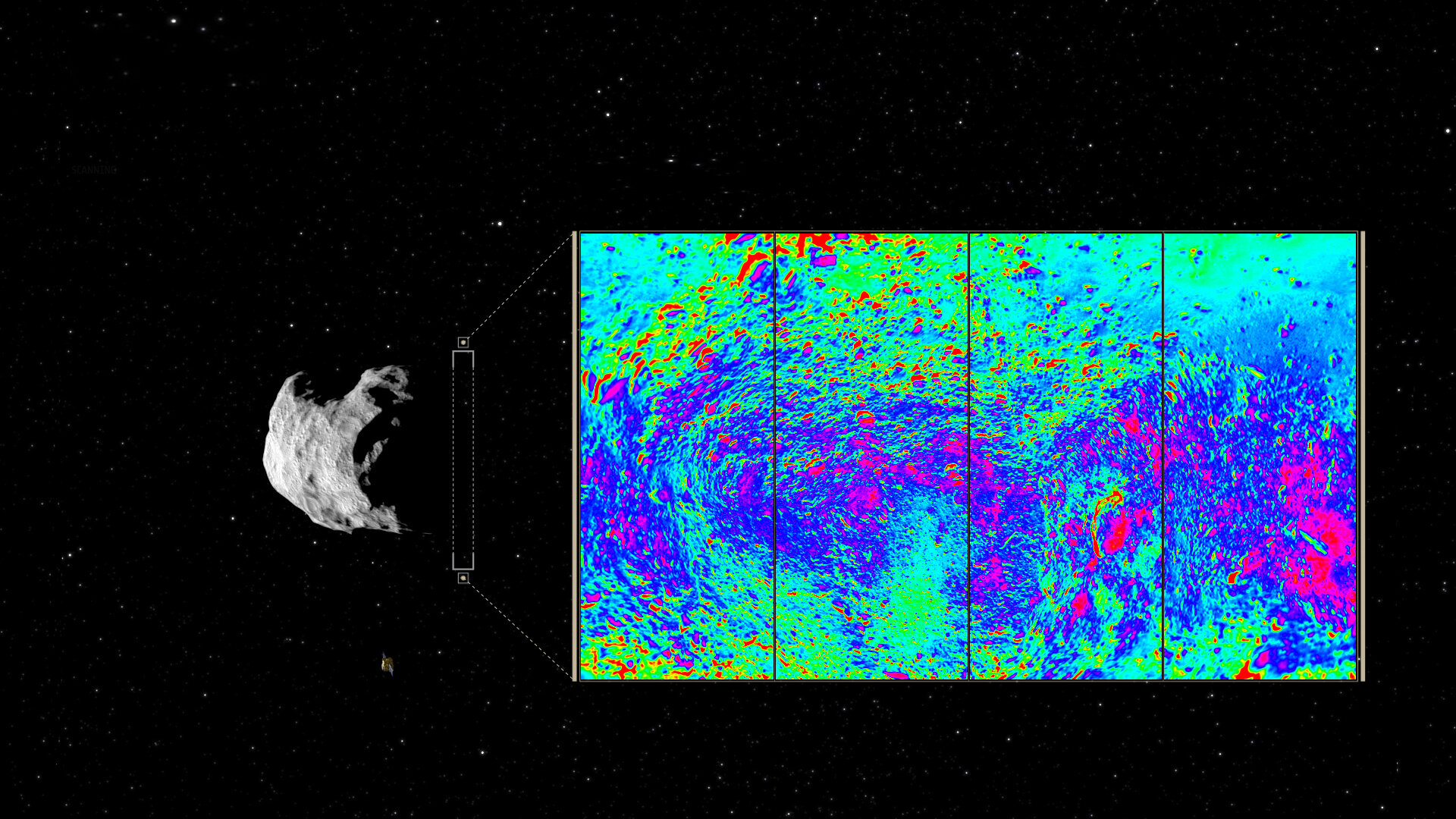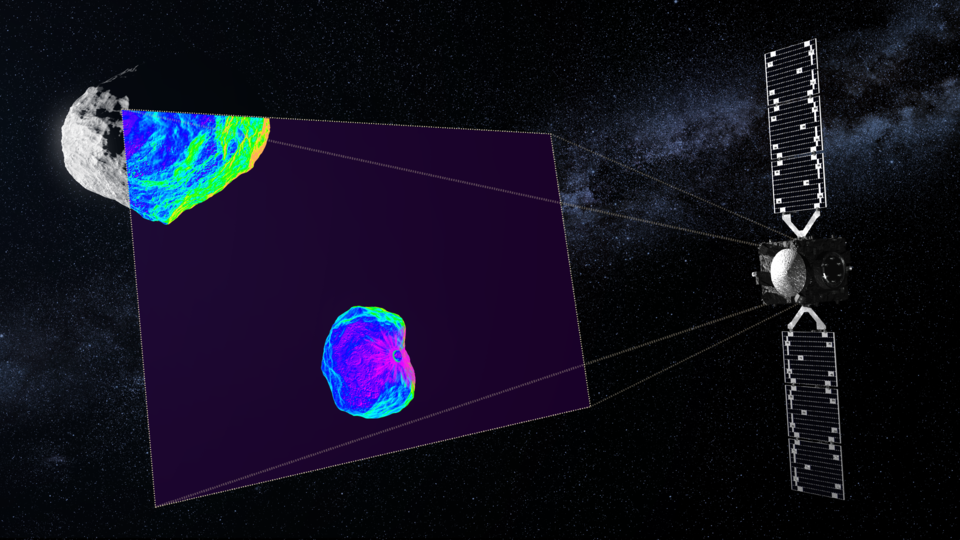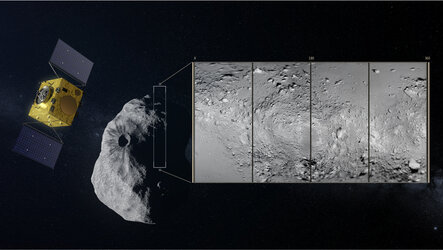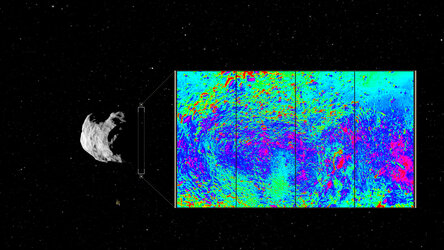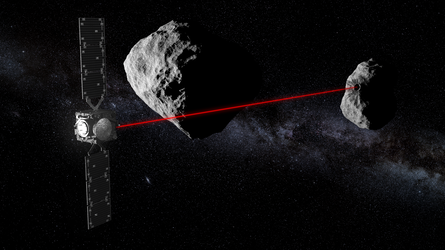TIRI
The thermal imager's (TIRI) primary goal is to discriminate between different possible surface properties of Didymoon, such as bare rock versus granular or dusty surfaces. Its secondary goal is to measure the thermal properties of the asteroid surface that are relevant to the characterisation of the soil structure and cohesion, and those that contribute to the thermal effects, in particular 'Yarkovsky/YORP' rotational changes.
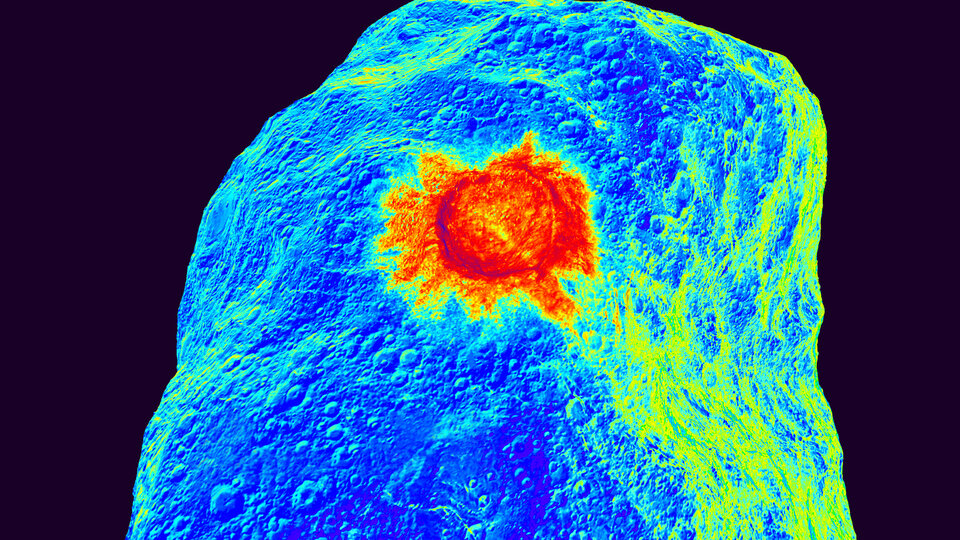
The thermal infrared imager will also be used at the actual moment of impact to monitor the changes in the surface properties as well as keep an eye on the ejecta. Afterwards, when AIM has moved closer to the surface again it will take detailed measurements of the crater.
| Primary objectives (a resolution of at least 20 m will be required) | |
| Science | |
| P1 | To discriminate between different possible surface properties of Didymoon: by measuring the brightness temperature distribution over the surface from a single observation geometry a rough estimate of the thermal inertia can be made. If the thermal IR spectroscopy can be done at sufficient resolution, it would be possible to study the degree of crystallinity of the dust and from this information about the mineralogical composition can be extracted |
| Technology | |
| P2 | To demonstrate the use of an IR instrument to support the asteroid rendez-vous phase |
| Secondary objectives (same resolution requirements as for the primary objectives) | |
| S1 | To characterise the surface temperature to an accuracy of 5 K (goal 1 K) at a spatial resolution of a few metres |
| S2 | To derive the thermal inertia at a spatial resolution of a few metres by observing a range of local times and phase angles |
| S3 | To characterise the surface composition through spectral mapping of the surface with a resolution of λ/Δλ = 200 |
| S4 | To observe the evolution of the ejecta plume after DART impact |
| S5 | To measure the thermal properties of Didymain |


